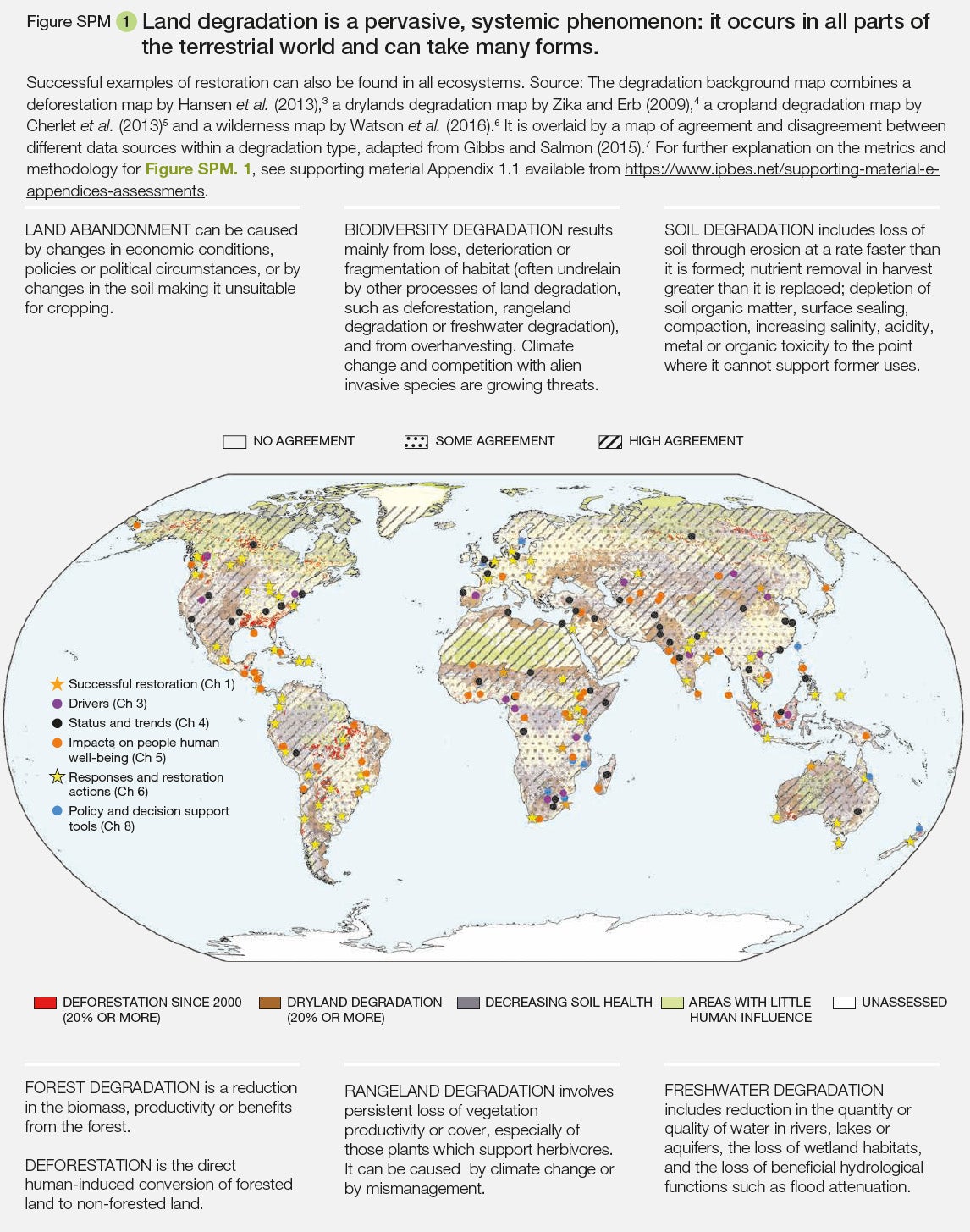Global Land Degredation
"Many of those who benefit from overexploitation of natural resources are among the least affected by the direct negative impacts of land degradation, and therefore have the least incentive to take action."
— Intergovernmental Science-Policy Platform on Biodiversity and Ecosystem Services (IPBES)

Figure SPM 1: The loss of biodiversity and ecosystem services from land degradation is costing more than 10% of the annual gross world product (GWP). Groups of vulnerable people experience the negative effects of land degradation first but are also the witness of the greater benefits when land degradation is avoided, reduced and reversed. Land degradation is a pervasive contributor to the loss of ecosystems and the decline of species; leading to their extinction. The knowledge and practices of how to halt or reverse the damage from land degradation gets lost as an effect of land degradation. By 2050, it is expected 50 to 700 million people will migrate due to land degradation and climate change.

Figure 5-2: 795 million people lack regular access to adequate food. Undernourishment is found in countries of Africa, 232.5 million, and Asia, roughly 511.7 million. In 2014 there were 158.6 million children under the age of five who suffered from chronic undernutrition and stunted growth. Globally the proportion of undernourished children has decreased since 2000; however, in sub-Saharan Africa it has increased from food availability being surpassed by population growth.
Driver of Land Degradation & Biodiversity Loss
- Climate change
- Crop and grazing land expansion into native vegetation
- Agricultural and forestry practices that are unsustainable
- Urban expansion with infrastructure development and extractive industry
Benefits of Avoiding, Reducing and Reversing Land Degadation
- Increase in food and water security
- Mitigation and adaptation of climate change
- Decline in conflict and migration